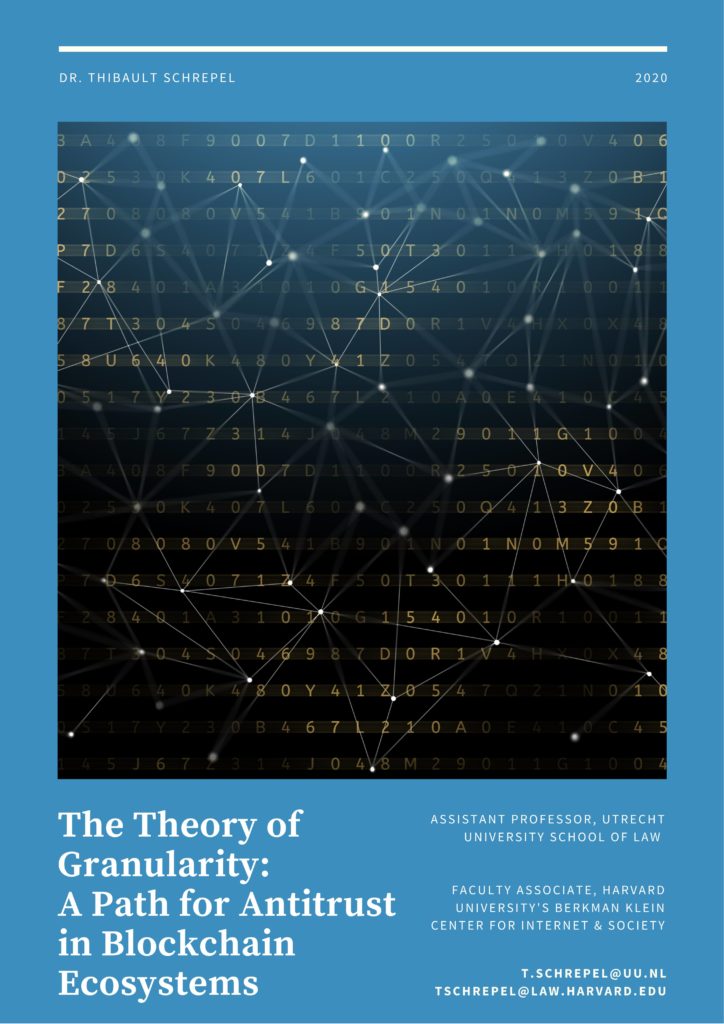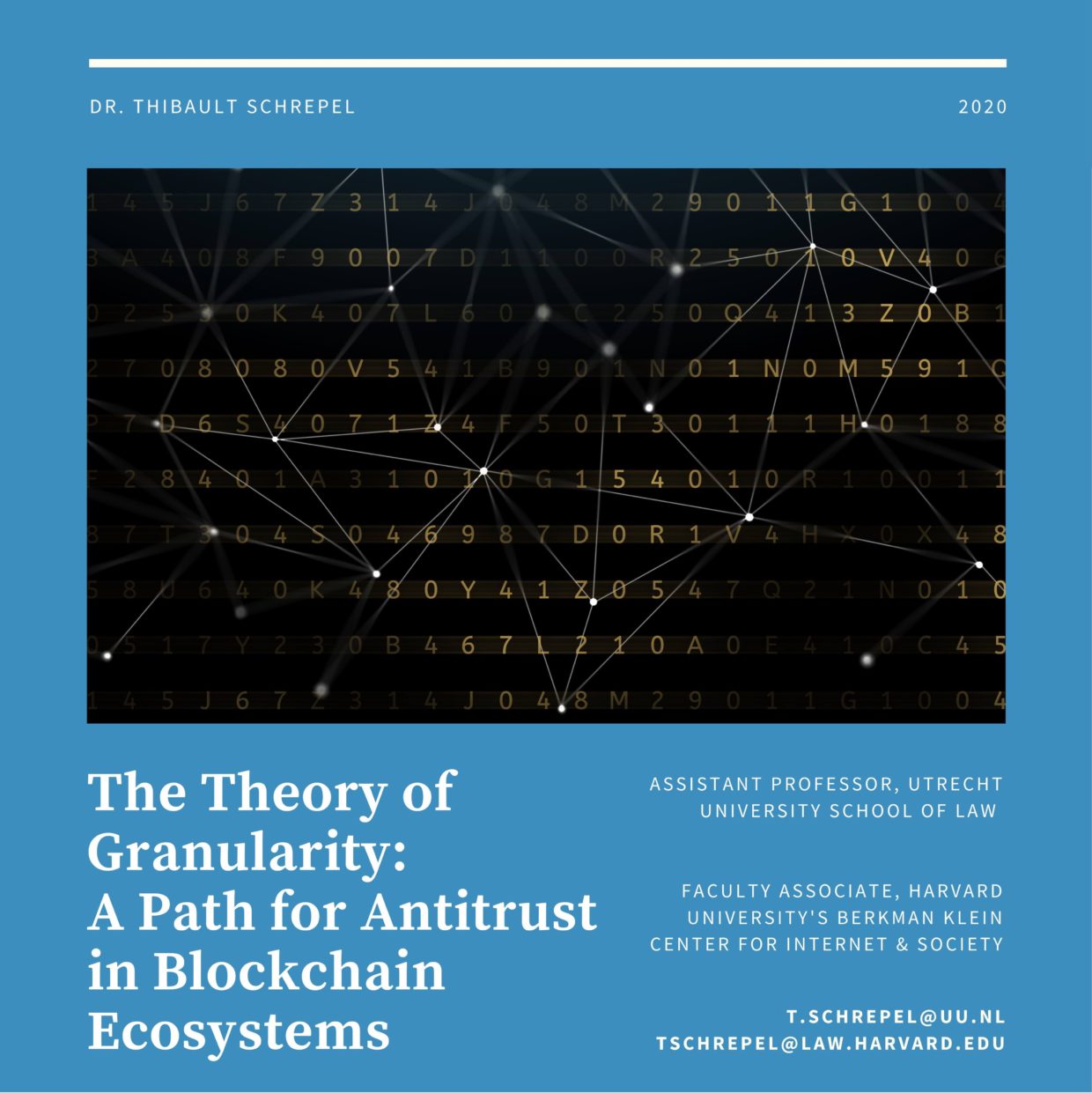CLICK TO DOWNLOAD
Modern antitrust and competition law relies extensively on the firm as defined by Ronald Coase: a hierarchy reducing transaction costs thanks to vertical control, where such control defines the firm’s boundaries. Meanwhile, the governance of public permissionless blockchains is horizontal. Transaction costs are minimized thanks to specific characteristics that are singular to these blockchains and do not depend on the verticality of relationships. The absence of vertical control to direct the resources holds antitrust and competition in check.
Against this background, the present article introduces the “theory of granularity,” which permits analysis of the roles played by each (group of) participant in the horizontal governance of public permissionless blockchains. On this basis, one may identify a “blockchain nucleus,” i.e., a set of participants collaborating to ensure and maximize the blockchain survival by “controlling” it all together. Antitrust and competition law becomes applicable again as the nucleus serves as the basis for the definition of the relevant market and market power, the assessment of practices’ legality, and liability assignment.


